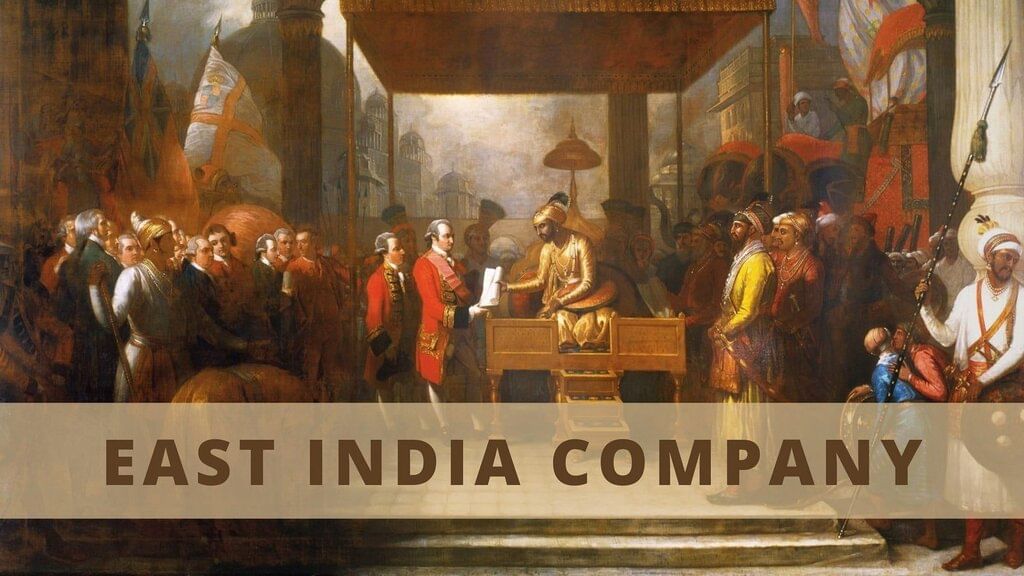Short and Long Answer Questions: The Colonial Era in India | Social Science Class 8 - New NCERT PDF Download
Short Answer Type Questions
Q1. What is colonialism, and how did the Age of Colonialism begin?
Ans: Colonialism is when one country controls another, imposing its political, economic, and cultural systems. The Age of Colonialism began in the 15th century as European nations like Spain, Portugal, Britain, France, and the Netherlands expanded overseas, conquering regions in Africa, Asia, the Americas, and the Pacific using military force to gain wealth and power.
Q2. Why was India attractive to European colonial powers before the 16th century?
Ans: India’s wealth, contributing about one-fourth of global GDP, came from trading spices, cotton, ivory, gems, sandalwood, teakwood, and wootz steel. Its flourishing manufacturing, diverse agriculture, and vast trade networks, combined with its strategic location, made it a prime target for European powers seeking to dominate global trade.
Q3. Who were the Portuguese, and what impact did they have on India?
Ans: The Portuguese, led by Vasco da Gama in 1498, were the first Europeans to colonize India, seizing ports like Goa and controlling sea trade via the cartaz system. Their Inquisition in Goa persecuted Hindus, Muslims, Jews, and converts, destroying temples and causing religious and social divisions in coastal regions. Vasco da Gama
Vasco da Gama
Q4. Describe the contributions and resistance of Rani Abbakka I and II.
Ans: Rani Abbakka I of Ullal resisted Portuguese attacks in the 16th century through alliances, dying in battle after capture. Rani Abbakka II continued this resistance, attacking Portuguese ships with fireballs. Their bravery, celebrated in Yakshagana dance-drama, symbolizes resistance against colonial oppression.
Q5. What was unique about the Battle of Colachel (1741)?
Ans: The Battle of Colachel was unique as Travancore’s King Marthanda Varma decisively defeated the Dutch East India Company, weakening their control in Kerala. This rare Asian victory over a European power inspired further resistance against colonial forces in India.
Q6. How did the British East India Company use the policy of “divide and rule”?
Ans: The British East India Company exploited rivalries among Indian rulers and communities, offering military support to some and conspiring against others, as seen in the Battle of Plassey (1757) where they backed Mir Jafar to betray Nawab Siraj-ud-daulah, thus weakening Indian unity and expanding British dominance.

Q7. What caused the Bengal Famine of 1770, and what were its effects?
Ans: The Bengal Famine of 1770 was caused by crop failure and harsh British taxation, forcing farmers to sell assets and children. About 10 million people, a third of Bengal’s population, died. British neglect and increased taxes during the crisis caused widespread suffering and exposed colonial brutality.
Q8. How did British economic policies affect India’s traditional industries?
Ans: British economic policies devastated Indian industries by imposing heavy taxes on Indian textile exports while importing British manufactured goods with low or no taxes. This imbalance caused the collapse of traditional sectors such as cotton, silk, wool, and paper manufacturing. Skilled artisans lost their livelihoods and many were forced into farming under harsh conditions. By the late 19th century, India’s share of the world economy had drastically declined, turning a once-rich economy into a poor colonial possession.
Q9. What forms of resistance did Indians show against British rule before 1857?
Ans: Before 1857, Indians resisted British rule through numerous movements. The Sanyasi-Fakir Rebellion involved Hindu and Muslim ascetics opposing British tax and movement restrictions. Tribal uprisings like the Kol and Santhal rebellions challenged land grabs and exploitation. Peasant revolts such as the Indigo Revolt protested forced indigo cultivation and violent repression. Although suppressed, these rebellions showed widespread dissatisfaction and laid the groundwork for the larger 1857 uprising and future freedom struggles.
Q10. What were the main causes and impact of the Great Rebellion of 1857?
Ans: The Great Rebellion was mainly caused by sepoys’ anger over religious insults such as cartridges greased with cow and pig fat, combined with grievances over land revenue policies and British arrogance. The rebellion began in Meerut and spread across North and Central India, involving leaders like Rani Lakshmibai and Begum Hazrat Mahal. Though ultimately crushed, the rebellion ended Company rule, leading to direct Crown control. It inspired future nationalist movements, marking a significant turning point in India’s freedom journey.
Long Answer Type Questions
Q1. Explain the Doctrine of Lapse and its effect on Indian princely states.
Ans: The Doctrine of Lapse was a policy introduced by the British East India Company in the 19th century to annex princely states without a natural male heir, disregarding Indian adoption customs. This policy allowed the British to expand their territories without direct military conquest.
- If a ruler died without a biological male heir, the British refused to recognize adopted heirs.
- Many Indian states, including Jhansi and Awadh, were annexed under this doctrine.
- It caused widespread anger and resentment among Indian rulers and the public who felt their traditions were being insulted.
- The policy contributed significantly to unrest that culminated in the 1857 Rebellion.
Overall, the Doctrine of Lapse weakened traditional Indian authority and increased British control, fueling resistance against colonial rule.
Q2. How did British education policies reshape Indian society and culture?
Ans: British education policies transformed Indian society by emphasizing European knowledge and English language, reshaping cultural and social structures across the country.
- Introduced English-medium schools designed to create a class of Indians “Indian in blood and color but English in taste.”
- Traditional Indian education, including Sanskrit, Persian, and local languages, declined sharply.
- Created a new educated middle class that served in colonial administration and bureaucracy.
- This education alienated many from their cultural roots and widened social divisions.
- Despite opposition from some British Orientalists, the English education system became dominant and influenced future nationalist leaders.
Thus, British education deeply influenced Indian identity and social fabric during colonial rule.
Q3. What were the consequences of British land revenue policies on Indian peasants?
Ans: British land revenue policies had devastating effects on Indian peasants, who bore the brunt of high taxes and rigid collection methods.
- The British imposed fixed cash taxes regardless of crop success or failure, ignoring traditional farming risks.
- Many peasants were forced into debt, losing land to moneylenders or landlords empowered by the colonial system.
- During famines, harsh taxation policies worsened starvation and poverty by leaving little for survival.
- The economic hardship sparked numerous peasant uprisings, showing widespread discontent.
- Revenue collected was primarily used to fund British military and administrative expenses rather than local welfare.
These policies seriously undermined rural economies and increased social instability during British rule.
Q4. How did colonial rule bring about cultural exchanges between India and Europe?
Ans: Although colonialism was exploitative, it also facilitated significant cultural exchanges between India and Europe, influencing ideas and knowledge on both sides.
- British and French scholars translated major Indian texts like the Vedas, Upanishads, and epics into European languages.
- Indian philosophy, arts, literature, and sciences influenced Western thinkers, writers, and artists in the 19th century.
- These translations introduced European audiences to Indian civilization’s depth and richness.
- Indian culture also absorbed European influences, especially through education, technology, and urban institutions.
- Despite colonial motives, this exchange enriched global culture and fostered mutual awareness beyond political domination.
Thus, cultural interaction between India and Europe during colonial times was complex and transformative.
Q5. Summarize the overall legacy of European colonialism in India.
Ans: European colonialism in India left a mixed legacy, with deep exploitation but also some lasting institutional changes.
- Economically, British policies caused massive wealth drain, famines, and deindustrialization, devastating India’s traditional economy.
- Administratively, they introduced a centralized bureaucracy, modern legal codes, and an education system that reshaped Indian society.
- Resistance movements grew, culminating in the 1857 Rebellion that ended Company rule and led to direct Crown governance.
- Cultural exchanges broadened world knowledge of Indian civilization but also caused loss of heritage through looting.
- The colonial period set the stage for India’s independence movement, shaping modern nationalism and identity.
While colonial rule brought suffering and hardship, it also inadvertently helped forge India’s path toward freedom and modernization.
|
31 videos|128 docs|7 tests
|
FAQs on Short and Long Answer Questions: The Colonial Era in India - Social Science Class 8 - New NCERT
| 1. What were the main reasons for British colonization of India? |  |
| 2. What was the impact of the British rule on Indian society and culture? |  |
| 3. What were some significant movements against British rule in India? |  |
| 4. How did the economic policies of the British affect India? |  |
| 5. What role did education play in the Indian independence movement? |  |





















